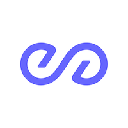-
 bitcoin
bitcoin $118548.520763 USD
3.67% -
 ethereum
ethereum $4352.564943 USD
4.79% -
 xrp
xrp $2.964058 USD
4.22% -
 tether
tether $1.000565 USD
0.05% -
 bnb
bnb $1028.372955 USD
1.46% -
 solana
solana $221.373507 USD
6.00% -
 usd-coin
usd-coin $0.999933 USD
0.02% -
 dogecoin
dogecoin $0.248633 USD
6.85% -
 tron
tron $0.341444 USD
2.38% -
 cardano
cardano $0.852946 USD
5.82% -
 hyperliquid
hyperliquid $47.869306 USD
6.15% -
 chainlink
chainlink $22.561476 USD
6.01% -
 ethena-usde
ethena-usde $1.001258 USD
0.05% -
 avalanche
avalanche $30.660000 USD
2.06% -
 stellar
stellar $0.400917 USD
9.76%
Bitget contract shorting tutorial
Opening a Bitget account and depositing funds are crucial for embarking on the contract shorting journey, a trading strategy designed to ride the waves of falling asset prices and potentially secure profits.
Nov 08, 2024 at 09:19 am

Bitget Contract Shorting Tutorial: A Comprehensive Guide
Introduction
Contract shorting, also known as short-selling, is a trading strategy used to profit from the decline in the underlying asset's price. By shorting a contract, you are essentially betting that the value of the asset will decrease in the future. If the price does fall, you will profit from the difference between the sell and buy prices.
Bitget is a leading cryptocurrency exchange that offers a robust contract trading platform. This tutorial will provide a step-by-step guide to help you short contracts on Bitget.
Step 1: Open a Bitget Account
The first step is to open an account on Bitget. You can do this by visiting the official website and clicking on the "Sign Up" button. You will need to provide your email address, create a password, and agree to the terms of service.
Step 2: Fund Your Account
Once you have created an account, you will need to fund it with cryptocurrency so that you can start trading contracts. You can do this by clicking on the "Deposit" button and selecting the cryptocurrency that you want to deposit. Bitget supports a wide range of cryptocurrencies, including Bitcoin, Ethereum, and USDT.
Step 3: Choose a Contract
The next step is to choose the contract that you want to short. Bitget offers a variety of contracts, including futures and perpetual swaps. Futures contracts have a fixed expiration date, while perpetual swaps do not.
Once you have chosen a contract, you will need to decide how much of the contract you want to short. The contract size is the total amount of the underlying asset that is covered by the contract. For example, a Bitcoin futures contract with a contract size of 1 BTC would cover 1 Bitcoin.
Step 4: Place a Short Order
Once you have chosen a contract and decided how much of the contract you want to short, you can place a short order. To do this, click on the "Sell" button and enter the amount of the contract that you want to short. You can also set a stop-loss order and a take-profit order to protect your profits and limit your losses.
Step 5: Monitor Your Trade
Once you have placed your short order, you will need to monitor it closely. The price of the underlying asset can fluctuate wildly, so it is important to make sure that you are comfortable with the risk involved.
If the price of the asset falls, you will profit from your short position. If the price rises, you will lose money. You can close your short position at any time by clicking on the "Buy" button and entering the amount of the contract that you want to buy back.
Step 6: Withdraw Your Profits
Once you have profited from your short position, you can withdraw your profits by clicking on the "Withdraw" button. You can withdraw your profits in the same cryptocurrency that you used to fund your account.
Conclusion
Contract shorting can be a powerful trading strategy, but it is important to remember that it also carries a significant amount of risk. Before you start shorting contracts, make sure that you understand the risks involved and that you are comfortable with the potential losses.
Disclaimer:info@kdj.com
The information provided is not trading advice. kdj.com does not assume any responsibility for any investments made based on the information provided in this article. Cryptocurrencies are highly volatile and it is highly recommended that you invest with caution after thorough research!
If you believe that the content used on this website infringes your copyright, please contact us immediately (info@kdj.com) and we will delete it promptly.
- BlockDAG, DOGE, HYPE Sponsorship: Crypto Trends Shaping 2025
- 2025-10-01 00:25:13
- Deutsche Börse and Circle: A StableCoin Adoption Powerhouse in Europe
- 2025-10-01 00:25:13
- BlockDAG's Presale Buzz: Is It the Crypto to Watch in October 2025?
- 2025-10-01 00:30:13
- Bitcoin, Crypto, and IQ: When Genius Meets Digital Gold?
- 2025-10-01 00:30:13
- Stablecoins, American Innovation, and Wallet Tokens: The Next Frontier
- 2025-10-01 00:35:12
- NBU, Coins, and Crypto in Ukraine: A New Yorker's Take
- 2025-10-01 00:45:14
Related knowledge

What is the maintenance margin for Bitcoin contracts?
Oct 02,2025 at 01:36am
Decentralized Exchanges Gain Momentum in 20241. Decentralized exchanges (DEXs) have seen a significant rise in trading volume, surpassing centralized ...

How to calculate the required initial margin for Ethereum contracts?
Oct 01,2025 at 06:01am
Understanding Initial Margin in Ethereum Futures1. The initial margin for Ethereum futures contracts represents the minimum amount of capital a trader...

What is a perpetual swap for Bitcoin contracts?
Oct 01,2025 at 08:18am
Understanding Perpetual Swaps in Bitcoin Trading1. A perpetual swap is a type of derivative contract that allows traders to speculate on the price of ...

What is the best platform for trading SOL contracts?
Oct 01,2025 at 06:36am
Understanding the Role of Decentralized Exchanges in Modern Crypto Trading1. Decentralized exchanges (DEXs) have reshaped how traders interact with di...

How to short sell Bitcoin using futures contracts?
Oct 01,2025 at 02:54am
Understanding the Role of Decentralized Exchanges in Crypto Trading1. Decentralized exchanges (DEXs) have become a cornerstone of the cryptocurrency e...

Are PEPE contracts a good way to trade volatility?
Oct 01,2025 at 04:18am
Understanding PEPE Contracts in the Cryptocurrency Market1. PEPE contracts, derived from the broader meme coin movement, have gained attention due to ...

What is the maintenance margin for Bitcoin contracts?
Oct 02,2025 at 01:36am
Decentralized Exchanges Gain Momentum in 20241. Decentralized exchanges (DEXs) have seen a significant rise in trading volume, surpassing centralized ...

How to calculate the required initial margin for Ethereum contracts?
Oct 01,2025 at 06:01am
Understanding Initial Margin in Ethereum Futures1. The initial margin for Ethereum futures contracts represents the minimum amount of capital a trader...

What is a perpetual swap for Bitcoin contracts?
Oct 01,2025 at 08:18am
Understanding Perpetual Swaps in Bitcoin Trading1. A perpetual swap is a type of derivative contract that allows traders to speculate on the price of ...

What is the best platform for trading SOL contracts?
Oct 01,2025 at 06:36am
Understanding the Role of Decentralized Exchanges in Modern Crypto Trading1. Decentralized exchanges (DEXs) have reshaped how traders interact with di...

How to short sell Bitcoin using futures contracts?
Oct 01,2025 at 02:54am
Understanding the Role of Decentralized Exchanges in Crypto Trading1. Decentralized exchanges (DEXs) have become a cornerstone of the cryptocurrency e...

Are PEPE contracts a good way to trade volatility?
Oct 01,2025 at 04:18am
Understanding PEPE Contracts in the Cryptocurrency Market1. PEPE contracts, derived from the broader meme coin movement, have gained attention due to ...
See all articles










































































